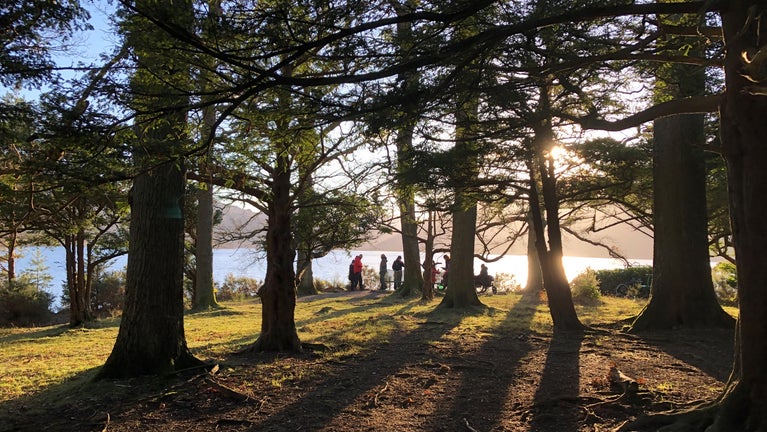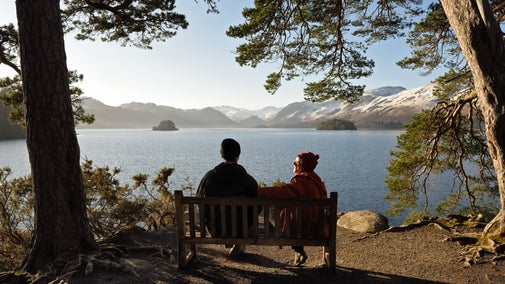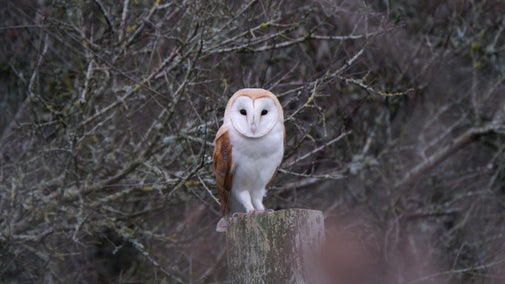Accessible walk to Broomhill Point viewpoint
Lake District
A stile-free out-and back route along the Derwent Water foreshore to the viewpoint at Broomhill Point, with views over the water to Cat Bells and Causey Pike. Choice of two routes at Strandshag bay, one with a smooth compact surface and one closer to the lake with some boulders, tree roots and muddy patches.
Near to
Borrowdale and Derwent WaterStart point
Keswick Lakeside Car Park, Grid Ref: NY265229 what3Words ///waltzed.sideburns.cases, Postcode: CA12 5DJTrail information
*The route starts and ends with a 7% gradient on tarmac from/to the car park, includes a cattle grid and a 16% gradient on rough bumpy surface. Otherwise all gradients are less than 15%. For further details, please see Terrain section
**This out-and-back walk starts from Keswick Lakeside carpark (what3Words ///waltzed.sideburns.cases), and includes tarmac lakeshore promenade before venturing out on paths through sheep fields with variable surfaces – including a recycled plastic boardwalk that’s 2m wide. For further details please see section marked Access.
***Please note this route crosses a field grazed by sheep, please keep dogs under close control, especially at lambing time. For further details please see section marked Facilities.
Cattle grid
This route includes one cattle grid. The pedestrian gate beside the cattle grid is narrow and opens one way. The gate is 39 inches (1m) wide. The narrowest gap is 35 inches (89cm).
Get in touch
Our partners

We’ve partnered with Cotswold Outdoor to help everyone make the most of their time outdoors in the places we care for.
Follow the Countryside Code
Help to look after National Trust places by observing a few simple guidelines during your visit and following the Countryside Code.

Things to see at Derwent Water and Keswick
Take in the views from Friar’s Crag and visit historic sculptures on a lakeside walk around Derwent Water or set off from Keswick to explore the surrounding woodlands and fells.

Wildlife in Borrowdale and Derwent Water
Discover the internationally significant ‘Atlantic oakwoods’ and Derwent Water which support a variety of rare species of plants and animals, including the red squirrel and vendace.












